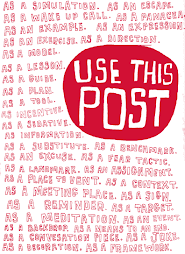parts that resonated with me - straight from his vol. 2:
This idea of learning as something that can be bought, acquired, and then completed is deeply ingrained in popular culture.
It is a simple model. Unfortunately, it is false. If it ever worked, it will not work anymore.
The implicit lessons of our educational system are still twentieth-century lessons: being on time, attentiveness, focus on single tasks, completion of tasks outside of context, and, perhaps most importantly, completion of tasks without any sense for why they are being done. These are the preparations for effective labor in the Dearborn factories of Henry Ford in the 1910s and 1920s.
There is still, implicit in most widely held conceptions of learning that the instructor, designer, or at least the institution knows what a learner should get out of a given course.
The problem, then, only comes into play when we are not sure what “people should be learning.” What is the curriculum for innovation? How do we impart creativity? Where do students turn to be guaranteed that they are learning what is new and current?
As knowledge becomes a moving target and the canon starts becoming less reliable, we need a new—or in fact an old—model of education drawn out on a new canvas: community.
The answer is to stop trying so hard, to stop looking for a systemic solution, and to return to a human-based knowledge plan. We need to return to community as a valid repository for knowledge, and away from a packaged view of knowledge and expertise.
The answer is to stop trying so hard, to stop looking for a systemic solution, and to return to a human-based knowledge plan. We need to return to community as a valid repository for knowledge, and away from a packaged view of knowledge and expertise.
“ The community is not the path to understanding or accessing the curriculum; rather, the community is the curriculum” (Cormier, 2008)
Publishing is done in order to crystallize and make knowledge about the community public—as in “public”-ation. Its value is in its ability to reach out from the community to others, not in its inherent knowledge.
“The term [rhizomatic learning] encapsulates a sort of fluid, transitory concept; the dense, multi-dimensional development and integration of several different sets of tools and approaches, appearing in diverse forms under separate settings, using all the multidimensional networking information technology tools, the social web, etc.” (Szucs, 2009, p. 4).
The rhizomatic model, in contrast to the academic one, keeps the knowledge in the people and in the community rather than distilling it into a paper based product – be it the final publication of a journal, book or other ‘changeless medium..
What the leaders of these guild style communities need to teach people, then, has little to do with content and more to do with actually using communities to learn.
Competency for the course was simple, the students needed to teach something to the rest of the class in the second week that they had never heard of in the first.
If we connect the whole world through social networks, then the people with very specific, very passionate interests will be able to collaborate.
Simply “using” the technology offers no particular benefit. Being able to participate in live knowledge building on a daily basis with a group of peers, on the other hand, is a privilege of the so-called digital age.
We are committing ourselves to people, not to specific bits of knowledge or information and hoping that our commitment to those people will keep what we know relevant, and keep us above water.
___________________________________________________________




































